Above is a view of Cerro San Cristobal, the historic mountain overlooking downtown Lima.
Rimac
The mountain is located in the Rimac district, just north of the historic city center on the other side of the Rimac River. On this day I had accompanied my father-in-law on business he had in the area. Then fellow Lima City of Kings writer Barry called to meet up for a beer. We decided to meet at the Alameda de los Descalzos promenade.
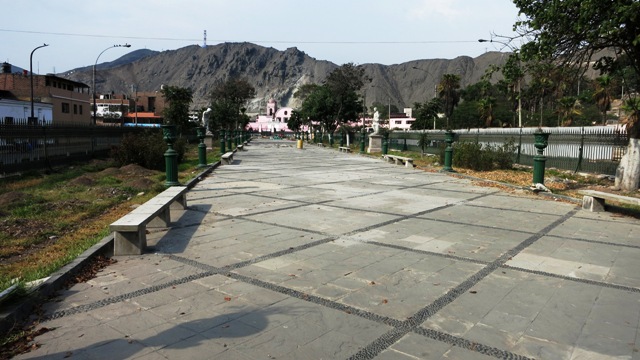
It’s not too pretty right now as it is under construction. A $2 million restoration plan was announced in 2009, but it’s not moving to quickly.
Rimac used to be a district of wealthy limeños who worked in the wealth-and-power center of the Peru viceroyalty, which entailed all of the Spanish-speaking continent for over a century. Things have changed and it’s obviously not so glamorous today, but the Alameda de los Descalzos used to be the promenade where the residents would go for a regular stroll and show off their status.
Cerro San Cristobal from the Alameda in Rimac.
The tienda where we opened a round of big cold Pilsens had a view of the Cerro San Cristobal mountain, a panoramic vantage point from 1,300 feet offering the best view overlooking the city. It came up in conversation that none of us had been there, and my father-in-law was only visiting Lima for a couple more days. We decided to see it.
The avenue features three historic churches, one of which includes the Conveto de los Descalzos museum.
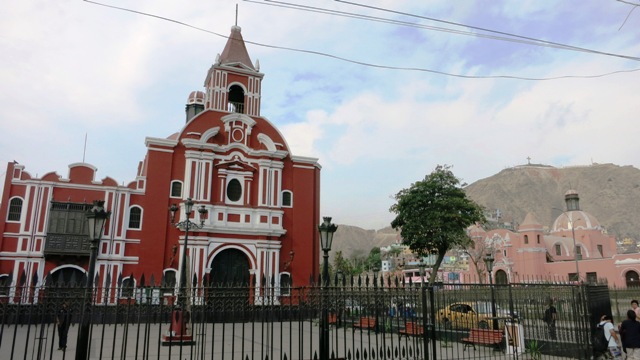
This picture of Iglesia de Santa Liberata captures some of Nuestra Señora Del Patrocinio in the background with the Cerro San Cristobal above.
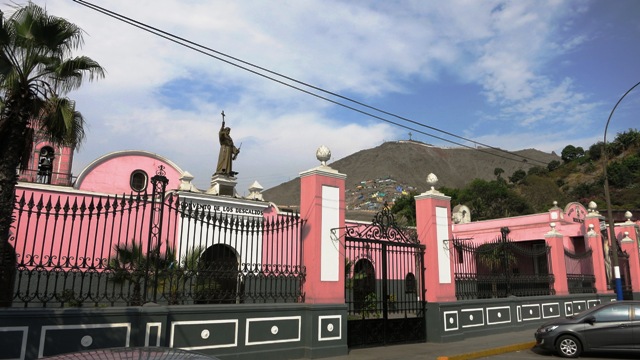
The Convento de los Descalzos, home to an acclaimed museum, with Cerro San Cristobal above.
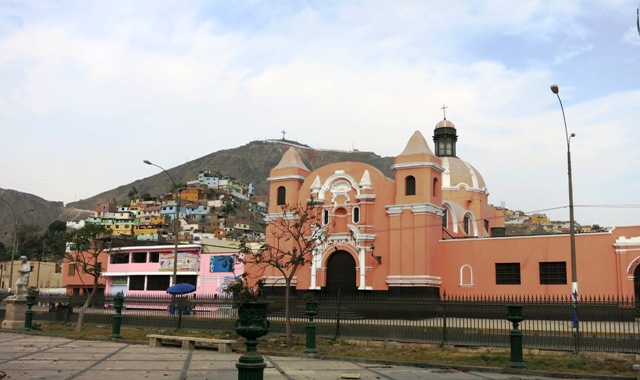
Nuestra Señora del Patrocinio, again with Cerro San Cristobal above.
From this promenade, a taxi quoted me 15 soles ($4) to go to the top of the mountain. We hopped in and started the windy climb through the shantytown. Most gringo websites say walking up can be dangerous. I have never walked it nor did I see it at night, but it didn’t look bad to me.
Cerro San Cristobal

Tens of thousands of Lima’s faithful make the walk up Cerro San Cristobal on Good Friday, and attendance generally spikes throughout Holy Week. They come to see the Via Crucis religious programming which culminates in the “Cholo Christ” performance starring actor Mario Valencia as Jesus. This year more than 30,000 attendees climbed the mountain on Good Friday, prompting the Rimac district to cancel the show and urge the crowd to descend the mountain out of security concerns.
History
During the first years of the Spanish colony, Pizarro and the conquistadors established rule in Peru with a tiny band of soldiers. They faced several Indian revolts which not only spanned the first years and decades, but centuries.
One of the earliest revolts was led by Manco Inca in 1536. He attacked Cuzco and Lima at the same time, the latter by Quizo Yupanqui in what became known as the Cerco de Lima. Yupanqui had won four consecutive battles against Spanish armies in the Andean highlands before leading 20,000 Inca warriors to new Spanish capital on the coast, which at the time was little more than the main square surrounded by houses for less than 1,000 residents.
Legend says Pizarro and 500 Spaniards climbed the Cerro San Cristobal mountain to enjoy a dominant high ground and the Incas retreated. Pizarro gratefully installed the cross that has overlooked Lima from Cerro San Cristobal ever since.
But that story has been discounted as myth. According to the authoritative text Conquest of the Incas by John Hemming, the Incas actually took the mountain while the Spaniards defended what is now the historic city center. After six days camping from three sides, the Incas attacked. However when Quizo Yupanqui and his most important generals were killed leading their forces into Lima’s narrow streets, the armies fled and Manco Inca’s national rebellion failed.
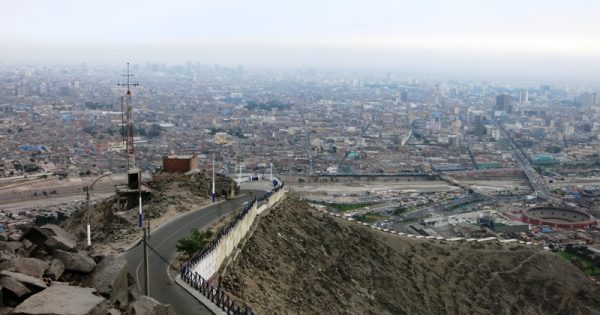
I had always heard the Cerro San Cristobal view was not worth the trip. However we went on a relatively clear day in March, and if the skies are clear I would include it as one of the best easy things to do in Lima.
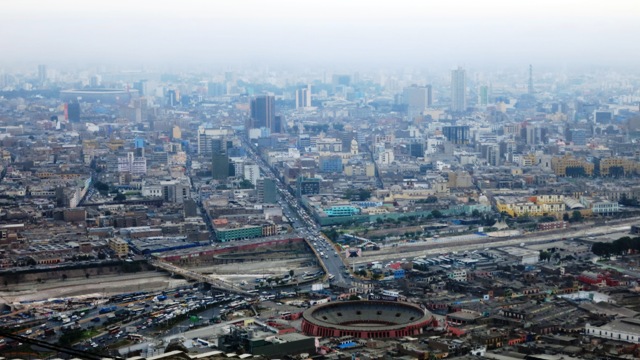
We could not see the sea or Callao as some websites have claimed, but above you can see downtown Lima until the National Stadium. Notice the Plaza de Armas and Plaza de Acho bullring.
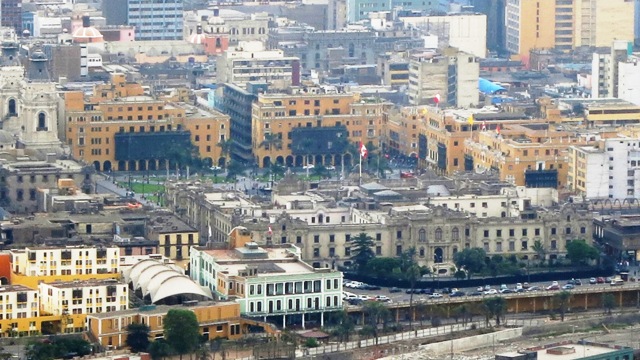
Closeup of the Plaza de Armas.
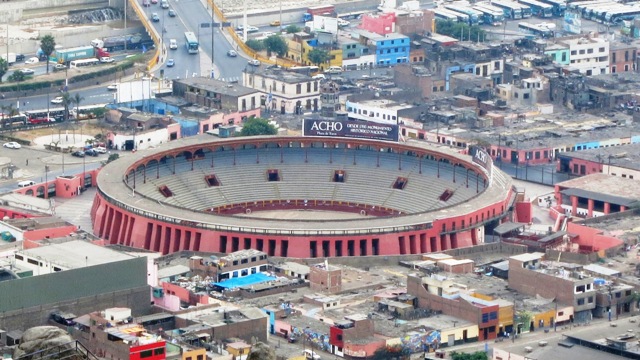
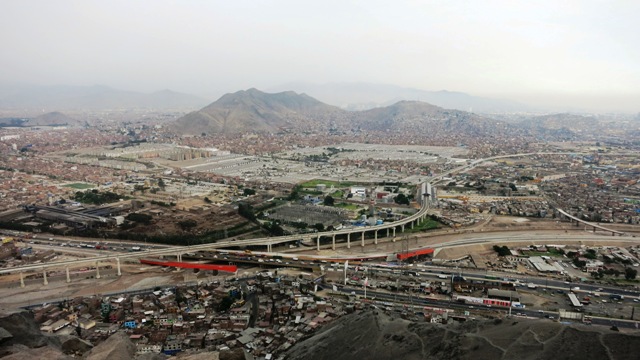
The Presbitero Maestro and El Angel cemeteries. Notice the Metro light rail line as well as general views over the Rimac, Breña, downtown, San Juan de Lurigancho and El Agustino districts.
Location and info
If you decide to visit, you will most likely leave from the Plaza de Armas, where taxis will charge you 20 to 30 soles ($6 – $9). There are also Rimac tour buses which leave the Plaza de Armas to visit both the Alameda de Descalazos and Cerro San Cristobal.
Former mayor Susana Villaran‘s administration had inked a deal to build a cable car to take tourists from Parque de la Muralla on the riverbank just behind the Palacio del Gobierno. However that project was killed by current mayor Luis Castañeda.
It’s worth a mention that the night view is supposed to be good too, but we don’t have pics yet. Stay tuned!
On the way up the mountain, it came up in conversation that the taxi driver had never been to Cerro San Cristobal. We struck a deal for him to check out the view with us and then take us back downtown afterwards for 30 soles ($9) altogether. Any taxi driver should go for that offer since they probably won’t get any customers until they’re back down the mountain and maybe out of Rimac.

That way, you have somebody to take a picture of you on top of the mountain!
Pictures
Click to enlarge or view the pictures as a slideshow in the Cerro San Cristobal album on the Lima City of Kings Facebook page.
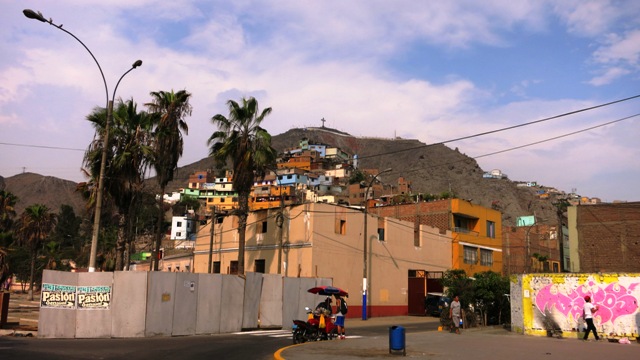
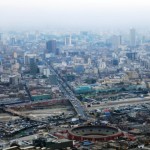
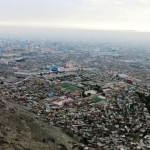
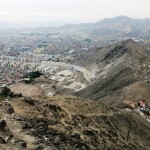

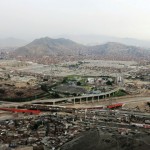
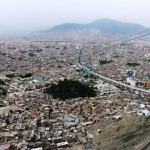
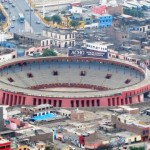

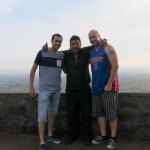
2 comments